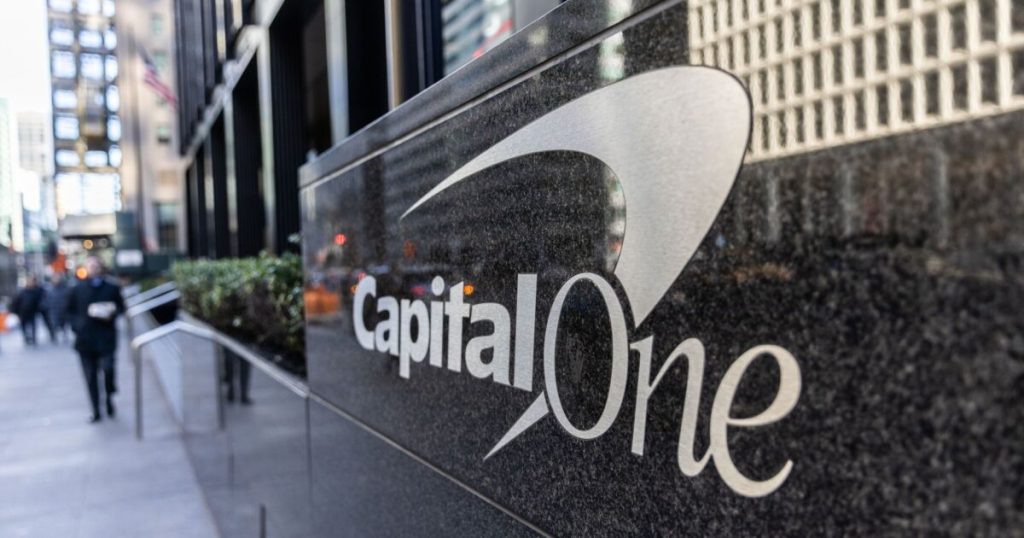This is a developing story. It will be updated.
Days after winning regulatory approval for its blockbuster acquisition of Discover Financial Services, Capital One Financial said that deal-related expenses contributed to first-quarter earnings that missed analysts’ estimates.
The McLean, Virginia-based company announced Tuesday that it recorded diluted earnings per share of $3.45, compared with the $3.68 consensus estimate of analysts. Discover-related expenses of $110 million and legal reserves of $198 million — up some two-and-a-half times from the prior quarter—dragged on earnings by a combined 61 cents per share.
The earnings report came in the wake of Capital One getting the green light to close its purchase of Discover, creating the largest credit card lender in the country.
Capital One Chairman and CEO Richard Fairbank reiterated Tuesday that the bank is “fully mobilized” to complete the transaction on May 18.
“[The combination of Capital One and Discover] leverages Capital One’s technology transformation and digital capabilities across a significantly larger customer franchise,” Fairbank said in a prepared statement. “And it offers the potential to enhance competition and create significant value for merchants and customers.”
Upon closing, the combined company will have $660 billion of assets. It will also have a massive chunk — estimated to be between one-fourth and one-third — of the subprime card market. And Capital One will have access to Discover’s payment network, instead of having to use Visa’s or Mastercard’s — an element of the transaction that Fairbank has called “the holy grail.”
The deal had been in flux for more than a year amid regulatory reviews. Concerns that the merger violated antitrust rules and regulations stirred up opposition from consumer advocacy groups, academics and lawmakers.
Last week, the deal got the approval of the Federal Reserve and Office of the Comptroller of the Currency. Even though regulators ordered Discover to pay more than $1 billion in fines and restitution in connection with the company’s earlier overcharging of merchants, Capital One now appears to have cleared the last remaining hurdles before crossing the finish line.
Capital One’s first-quarter earnings report paints a relatively rosy picture of consumer financial health, with even stronger numbers than the fourth quarter. In January, Fairbank said that the economy during the second half of last year demonstrated “renewed strength,” despite “pockets of pressure” — referencing inflation and high interest rates.
“The consumer is in a great place,” Capital One CEO Richard Fairbank had said during the company’s fourth-quarter earnings call, noting that folks had “microscopes” out for any red flags.
In the first quarter, Capital One released some $368 million in its allowance for loan losses based on a more upbeat view of its domestic card portfolio. The net charge-off ratio also dropped 19 basis points from the prior quarter, to 3.40%, though that figure was still 7 basis points higher than a year earlier.
Additionally, some 4.25% of the bank’s domestic credit card balances were delinquent during the first quarter, a 25-basis point drop from the prior quarter.
The company’s beat on analysts’ expectations of adjusted earnings, which came in at $4.06 per share, was “all on credit, as revenues and expenses missed slightly,” Truist Securities analyst Brian Foran said in a note after the results were released.
U.S. bank executives have warned in recent weeks that it’s uncertain how Trump administration tariff policies and the related market turmoil will impact their customers. Many lenders have said that the economic uncertainty has muddled what had been a pretty optimistic outlook.

